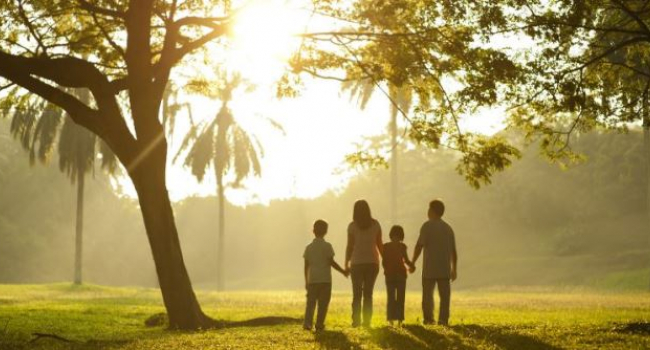- Latest news▼
-
15:32, April 26 ESCMID: New method of purifying the air with ultraviolet light could protect world from new pandemic

-
08:43, April 26 Enzymes that convert different blood groups into first group are discovered

-
19:41, April 25 Children’s Hospital Los Angeles and International Center of Professional Development Allergy/Immunology Conference

-
17:31, April 25 JAMA: patient grew long, curly eyelashes because of chemotherapy

-
11:08, April 25 Mpox epidemic declared in Republic of the Congo

-
08:31, April 25 OU: quitting smoking 4 times more likely to cure laryngeal cancer

-
01:20, April 25 Paralyzed man in China writes hieroglyphs using neural implants placed in his brain

-
15:11, April 24 Zombie deer disease possibly linked to hunters’ deaths

-
12:27, April 23 Appetite: Scientists found out the secret to the appeal of large portions of fast food

-
10:33, April 23 Scientists test new approach to fighting viruses

-
08:38, April 23 Ketamine may help with postpartum depression

-
22:12, April 22 Unhealthy amount of sugar found in baby food products of a well-known brand

-
19:41, April 22 Air pollution puts health of more than 1.6 billion workers globally at risk

-
17:25, April 22 Scientists found baked goods and lack of sleep to be more dangerous than alcohol

-
16:02, April 22 342 cases of measles recorded in Armenia so far in 2024

All materials
Residential green space in childhood is associated with lower risk of psychiatric disorders from adolescence into adulthood

Growing up in urban environments is associated with risk of developing psychiatric disorders, but the underlying mechanisms are unknown. Green space can provide mental health benefits and possibly lower risk of psychiatric disorders.
This nation-wide study covering >900,000 people shows that children who grew up with the lowest levels of green space had up to 55% higher risk of developing a psychiatric disorder independent from effects of other known risk factors.
Stronger association between cumulated green space and risk during childhood constitutes evidence that prolonged presence of green space is important. Our findings affirm that integrating natural environments into urban planning is a promising approach to improve mental health and reduce the rising global burden of psychiatric disorders.
Urban residence is associated with a higher risk of some psychiatric disorders, but the underlying drivers remain unknown. There is increasing evidence that the level of exposure to natural environments impacts mental health, but few large-scale epidemiological studies have assessed the general existence and importance of such associations.
Here, we investigate the prospective association between green space and mental health in the Danish population. Green space presence was assessed at the individual level using high-resolution satellite data to calculate the normalized difference vegetation index within a 210 × 210 m square around each person’s place of residence (∼1 million people) from birth to the age of 10.
We show that high levels of green space presence during childhood are associated with lower risk of a wide spectrum of psychiatric disorders later in life. Risk for subsequent mental illness for those who lived with the lowest level of green space during childhood was up to 55% higher across various disorders compared with those who lived with the highest level of green space.
The association remained even after adjusting for urbanization, socioeconomic factors, parental history of mental illness, and parental age. Stronger association of cumulative green space presence during childhood compared with single-year green space presence suggests that presence throughout childhood is important. Our results show that green space during childhood is associated with better mental health, supporting efforts to better integrate natural environments into urban planning and childhood life.
Full article: PNAS
Follow NEWS.am Medicine on Facebook and Twitter
- Video
- Event calendar
- Children’s Hospital Los Angeles and International Center of Professional Development Allergy/Immunology Conference
- First Armenian-German Conference entitled “Heart Failure Spring School”
- Allogeneic bone marrow transplant in case of hematological malignancy performed in Armenia for first time
All materials
- Archive
- Most read
month
week
day
- Scientists found baked goods and lack of sleep to be more dangerous than alcohol 1040
- Next pandemic likely to be triggered by flu - scientists 1016
- 342 cases of measles recorded in Armenia so far in 2024 963
- Scientists develop new method to safely stimulate immune cells to fight cancer 823
- Cognitively stimulating jobs in midlife could lower dementia risk in old age, study finds 822
- Blood test can determine who is at risk of developing multiple sclerosis - scientists 820
- Unhealthy amount of sugar found in baby food products of a well-known brand 819
- Air pollution puts health of more than 1.6 billion workers globally at risk 814
- Ketamine may help with postpartum depression 811
- Appetite: Scientists found out the secret to the appeal of large portions of fast food 806
- Scientists test new approach to fighting viruses 787
- BrainStimulation: electrical brain stimulation alleviates anxiety and depression in the elderly 751
- Zombie deer disease possibly linked to hunters’ deaths 731
- Mpox epidemic declared in Republic of the Congo 539
- Paralyzed man in China writes hieroglyphs using neural implants placed in his brain 510
- Find us on Facebook
- Poll





